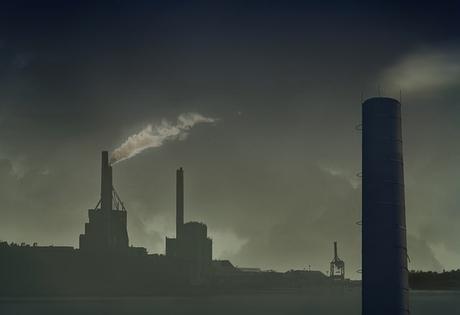When President Trump inquired about climate change, he often pitches America’s “clean air” to draw away the attention from the climate change issue.
While meeting Leo Varadkar, Prime Minister of Ireland this month, he again said: “We have the cleanest air in the world in the United States and it’s gotten better since I’m president.”

Although America’s air is much cleaner than before, however, it’s still not “the cleanest” as President Trump claims. Recent data suggests that air pollution is ticking back up.
By the metric of fine particulate pollution, the United States ranks 10th in air quality. Considering that, the European countries like New Zealand, Canada, Australia, and several others can also boast clearer skies.
PM2.5 which is known as microscopic pollution (airborne particles are 2.5 micrometers and less in diameter or one-thirtieth of a human hair in size) is a byproduct of burning and usually generates from power plants, car exhaust, and wildfires. It affects human health, causing asthma and respiratory inflammation along with increasing the risk of heart attack, stroke, and lung cancer.
However, the air wasn’t always so clear in America. Over the last 40 years, particulate matter and other pollution have decreased dramatically mostly because of regulations established under the Clean Air Act of 1970 and its later updates, according to experts.
The Environmental Protection Agency was given power by that wide-ranging law to regulate pollution from both stationary (like power plants, chemical factories, and gas stations) and mobile (like cars, trucks, and planes) sources. It also established exposure limits of particulate matter and five other air pollutants hazardous to human health, and the E.P.A. regularly review and update the same based on modern science.
Under the Clean Air Act, the agency started to regulate climate-warming greenhouse gases in 2009.
Improved Air Quality has saved American lives, but millions of them still breathe Unhealthy Air
The public health benefits were prominent due to these pollution reductions.
According to a recent study, air pollution deaths fell by about 30 percent between 1990 and 2010, primarily due to reductions in particulate pollution. The cleaner air has extended American life expectancy by several months and improved children’s health as suggested by another research.
However, according to the E.P.A, 110 million and more Americans still live in counties with unhealthy levels of pollution. An estimated 100,000 Americans die each year prematurely because of illnesses caused or exacerbated by polluted air.
“We’ve seen tremendous progress in reducing air pollution in the U.S.,” said Paul Billings, a representative of the American Lung Association, which advocates for air quality improvements.
“Cars and trucks are much cleaner than they were, power plants are cleaner, industrial operations are cleaner,” he said. “But cleaner air is not clean air.”
Los Angeles and Central Valley of California are among the several other parts of the country that are still struggling with ground-level Ozone formed when other pollutants react in the presence of sunlight and heat. This kind of pollution, known as smog, can damage the lungs and cause many severe health problems, including death.
However, in areas that meet national standards for fine particulate matter and Ozone, residents may suffer from air pollution. As per scientists, there is no set limit to determine the level below which the exposure to these pollutants is safe.
“There are still health effects at the lower levels of pollution,” said Beate Ritz, a researcher at the University of California, Los Angeles, who studies the public health impacts of air pollution.
“It’s the difference between having very acute, very bad effects where you might be hospitalized versus potentially having a lower ..I.Q. in your child,” she said. Scientists have just started to understand the significant health impacts of breathing polluted air, she added.
Climate Change May Worsen Air Pollution
The American Lung Association found in a report issued this year that air pollution was ticking back up covering much of the country and warned that in the future climate change could make it “harder to protect human health.”
From 2015 to 2017, there is an increase in both short-term particulate pollution and ground-level Ozone compared to the last three-year period, the report described. In the West, wildfires contributed to higher PM2.5 pollution levels, while warmer temperatures result in the rise in Ozone (globally, the three warmest years on record were 2015, 2016 and 2017).
“Under climate change, we expect air pollution to be worse,” said Jason West, a professor of environmental science at the University of North Carolina, Chapel Hill. For example, Ozone forms fast in higher heat.
However, according to him, the recent spikes in pollution should not be interpreted as an indication of significant changes to the air quality trajectory of the country. “We’re only looking at a couple of years so far,” he said.
Roll Back of Air Pollution Rules That Weaken Regulations
The Trump administration has taken parallel steps to weaken air quality and climate regulations.
Two significant actions include withdrawing the Obama-era Clean Power Plan that sought to cut emissions of greenhouse gases and reduce pollution from power plants and rolling back standards for national auto emissions.
The E.P.A. has also proposed changing how it calculates the health risks of air pollution and which studies can be used to inform pollution standards.
Mr. Billings of the American Lung Association, mentioned climate change and deregulation to be dual threats to air quality in the future.
Instead of continuing the progress of the past decades, he said, “there’s a fear we will see air pollution get worse.”

